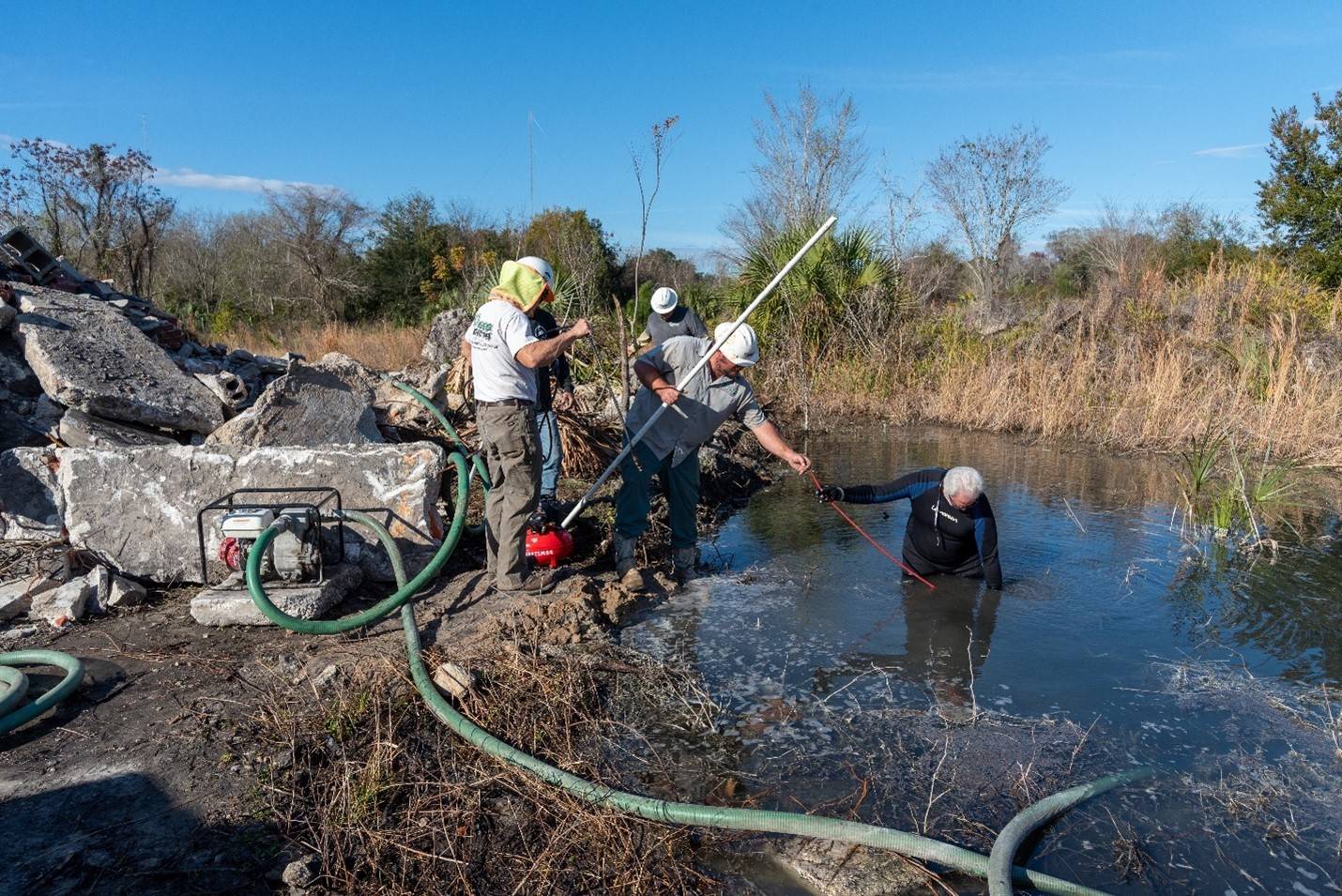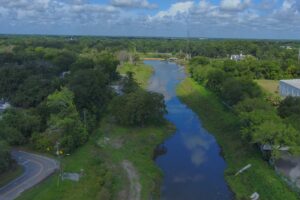Plugging abandoned wells saves millions of gallons of water
Oct. 26, 2023
District Hydrologist Gary Foster (in water in wetsuit) helps to guide equipment into place to plug an abandoned artesian well in Putnam County.
While homeowners are on the lookout for leaks in their homes that could hit their wallets through utility bills, the St. Johns River Water Management District diligently watches for opportunities to plug abandoned free-flowing wells to save millions of gallons of water in northeast and east-central Florida.
Since the early 1980s, the District has aggressively worked with other agencies, local governments and the public to detect, evaluate and control abandoned artesian (free-flowing) wells. An artesian well is a well that has been drilled into an aquifer where the underground pressure causes the water to rise inside the well. Many of these free-flowing wells were used by farmers decades ago but are no longer needed. These older free-flowing wells are typically in a deeper portion of the aquifer making them susceptible to an increase in salinity or contaminants. Additionally, as the well ages, deterioration of the well casing can occur, which may allow poor water quality to move into other zones of the aquifer that are used for drinking water supplies. Florida law now requires well owners to control the discharge from artesian wells, limiting flow to only the amount of water needed for an intended use.
To accelerate the well plugging work, the District’s Governing Board in November 2021 waived fees associated with plugging eligible abandoned artesian wells within the District’s 18-county region. Prior to that, property owners would pay $600 for the District to plug a free-flowing well.
How and why the District operates its well plugging program is the topic of the District’s Oct. 26, 2023, WATERSPOUT podcast. Gary Foster, a District hydrologist, is the guest to discuss how the team’s work helps protect Florida’s water resources.






